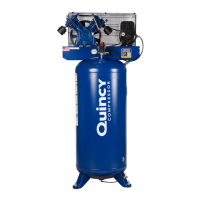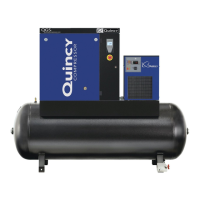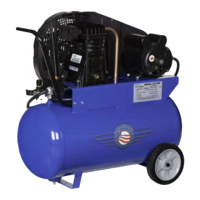Page 4
Follow the safety precauons for electrical connecons
Plan ahead to protect your eyes, hands, face and ears
When operang
1. Follow all local electrical and safety codes,
as well as the National Electric Code (NEC)
and the Occupational Safety and Health Act
(OSHA).
2. Wiring and fuses should follow electrical
codes, current capacity and be properly
grounded.
1. Do not exceed the pressure rating of any
component of the system.
2. Release pressure within the system slowly to
prevent ying dust and debris.
3. If the equipment starts to abnormally vibrate,
STOP the compressor immediately and
check for the cause.
Dress for safety
1. Wear safety glasses (meeting ANSI Z87.1 or
in Canada CSA Z94.3-99) and use hearing
protection when operating the unit. Everyday
glasses are not safety glasses.
2. Wear shoes to prevent shock hazards.
3. Tie back long hair.
Pay attention to your hands
3. Protect wires from contact with sharp
objects.
All electrical connections should be made
by a qualied electrician.
Keep ngers away from running
compressor. Fast moving and hot parts
may cause injury and/or burns.
Never operate the compressor without
a belt guard. The compressor can start
automatically without warning. Personal
injury or property damage could occur from
contact with moving parts.
Use of a mask or respirator per chemical
manufacturers’ instructions may be
necessary if there is a chance of inhaling
toxic fumes. Read mask and respirator
instructions carefully. Consult a safety
expert if you are not sure about the use of
certain masks or respirators.
To avoid serious injury, never change the
safety valve or pressure switch settings.
Keep safety valve free from paint and
other accumulations. See compressor
serial tag for maximum operating
pressure. Do not operate with the
pressure switch set higher than the
maximum operating pressure.
Be careful when touching the exterior of
compressor, pump, motor and air lines; they
may become hot enough to cause injury.
The compressor may be hot even if the unit
is stopped.
CAUTION
WARNING
WARNING
WARNING
WARNING
CAUTION
CAUTION

